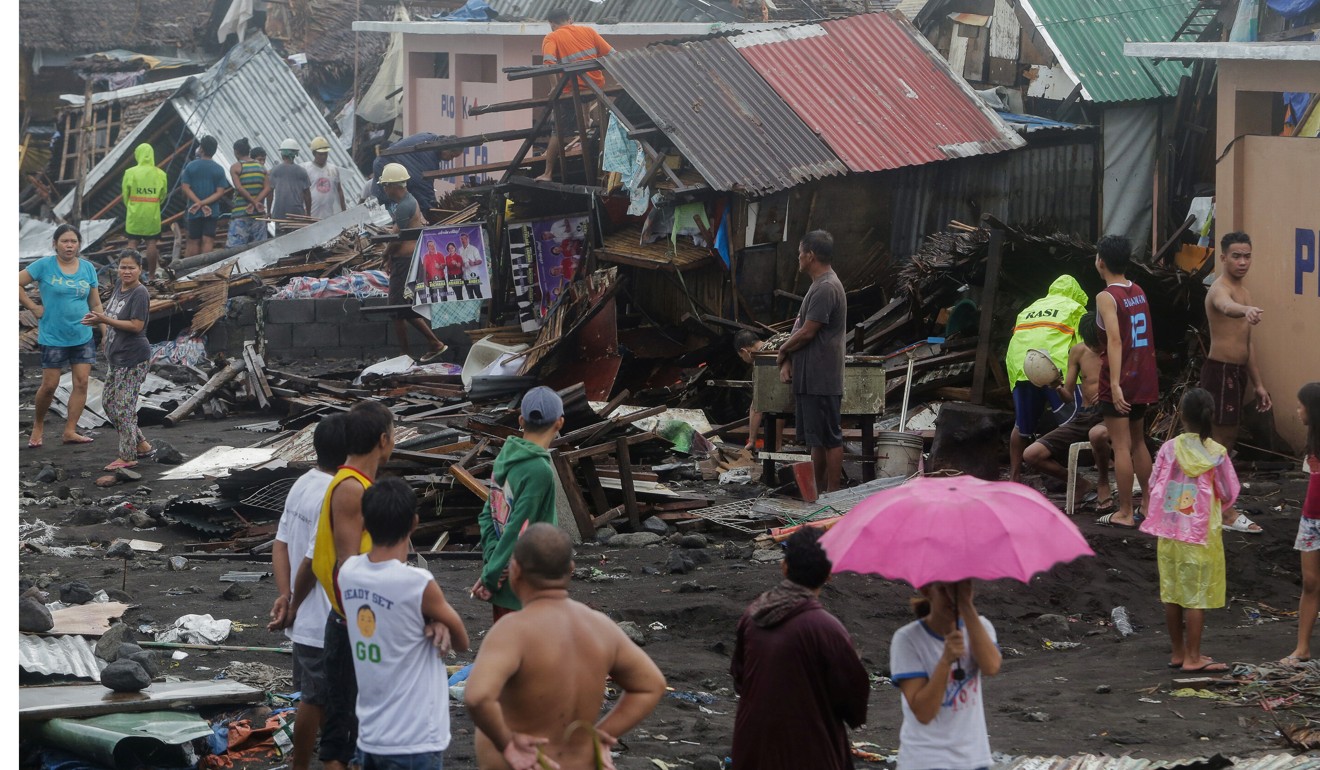
Manila airport reopens after Typhoon Kammuri leaves trail of destruction in Philippines
- At least three people have died as Typhoon Kammuri moves over the Philippines, causing widespread damage
- Nearly 500 flights were cancelled as Manila’s international airport closed operations out of safety concerns
Police said one man was crushed by a falling tree and another killed by a flying piece of timber, both on the island of Mindoro south of the capital. A man was electrocuted on Monday while securing a roof ahead of the storm’s arrival.
Forecasters said Kammuri had weakened but remained strong, with sustained winds of up to 150km/h (93 miles/h), and maximum gusts of 205km/h as it tracked northwest.
Authorities were still assessing the storm’s impact, but a small local airport was seriously damaged, many power poles toppled and homes were battered.
“A lot of trees fell … There were a lot of roofs flying during the typhoon too,” said Junie Castillo, a disaster officer in one of the areas first hit. “We have yet to quantify the extent of the damage.”
Due to the high winds, Manila’s Ninoy Aquino International Airport was “closed for operations”, airport authority general manager Ed Monreal said.
The airport was reopened late on Tuesday. Runways were opened at 6pm local time to allow airlines to bring back their aircraft to Manila, and regular flight operations resumed at 11pm.
Nearly 500 flights were cancelled on Tuesday.

One traveller, 23-year-old Canadian Constance Benoit, was hit with a nearly day-long delay to her flight back home. She had arrived in Manila on a typhoon-buffeted flight on Monday morning from the central island of Cebu.
“It was the most turbulent flight I ever took in my life,” she said. “I just discovered what airsickness is.”
About 340,000 people had been evacuated from their homes in the central Bicol region, disaster officials said.
People living in low-lying slum districts of Manila were told to leave their makeshift homes as a precaution, but it was not clear how many people were impacted.

The windsurfing competition was halted as a precaution and triathlon events were held earlier than scheduled.
Ramon Suzara, the chief operating officer of the organising committee, said on Monday organisers wanted the competitions to go on.
“Like (for) volleyball, it will continue as long as there is power supply and teams and technical officials are safe, we will continue but without spectators,” he said.
The storm is another difficulty for the Games, which suffered from a string of logistical glitches and a rush of last-minute construction in the run-up to Saturday’s opening. The competition, which is spread across three main sites that are hours’ drive apart, include 56 sports and dozens of venues.
Around 8,750 athletes and team officials are expected at this year’s 30th edition – the biggest ever – along with another 12,000 volunteers.

The Philippines is hit by an average of 20 storms and typhoons each year, killing hundreds and putting people in disaster-prone areas in a state of constant poverty.
Additional reporting by Bloomberg

.png?itok=arIb17P0)